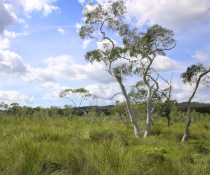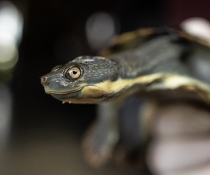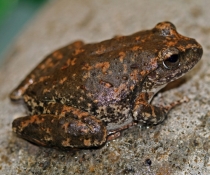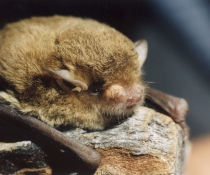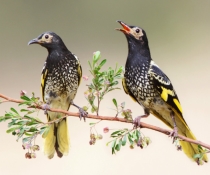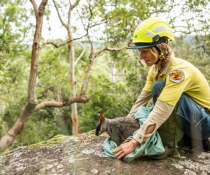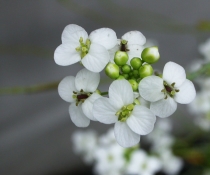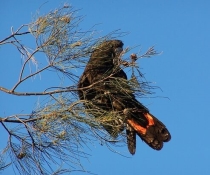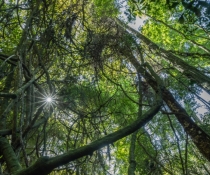Saving the regent honeyeater
It's estimated that there are only between 250 and 350 critically endangered regent honeyeaters left in the wild. To help save this species, the NSW Government and partners are working to maintain a viable population and enhance the habitat for this iconic bird.
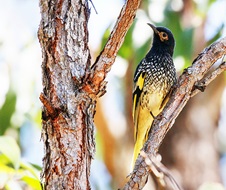
Regent honeyeaters (Anthochaera phrygia) mainly inhabit temperate woodlands and open forests of the inland slopes of south-east Australia. Their habitat was drastically reduced by historical clearing for roads and agriculture, and the remaining habitat is highly fragmented and surrounded by agricultural lands.
Once widely distributed, their rapid decline over the last 30 years has led to their current critically low abundance and rendered them vulnerable to extinction in the wild.
To combat this decline and to help save this species, the regent honeyeater conservation project aims to maintain a viable population and enhance the condition of their habitat. The project is led by the NSW Government's Saving our Species program, in partnership with Taronga Conservation Society and BirdLife Australia.
To date, the project has:
- improved the extent and quality of regent honeyeater habitat
- bred more than 500 birds in captivity as an insurance population, 300 of which have since been released into the wild
- increased our understanding of the species and the wild population
- successfully engaged the community in the recovery program.
Other partners delivering actions under the national recovery plan include the Australian National University, University of New England, NSW National Parks and Wildlife Service, NSW Local Land Services and Mindaribba Local Aboriginal Land Council.
- Learn more about the regent honeyeater
- Learn more about how Saving our Species is working to secure a future for our regent honeyeaters

